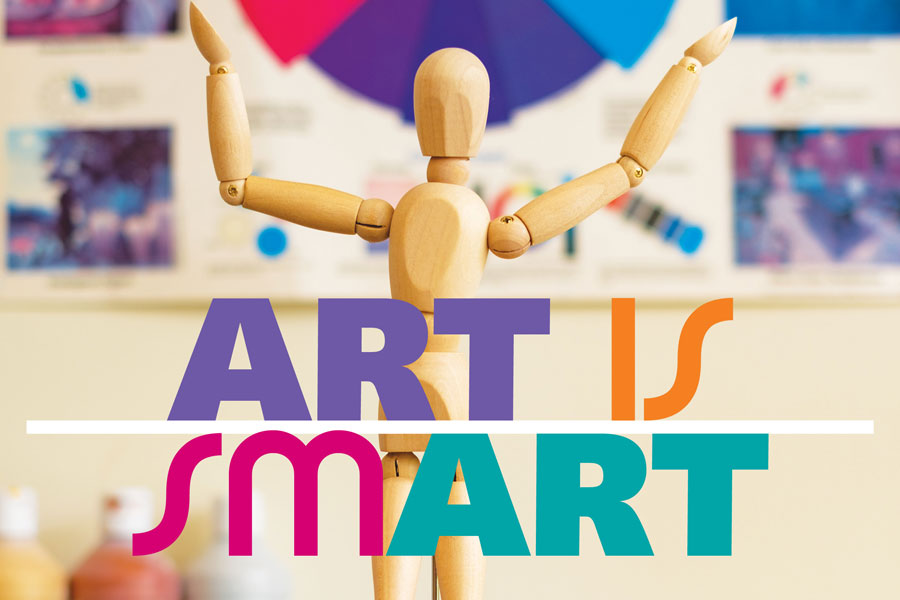Schechter Westchester’s Upper School art program is evidence of the school’s commitment to educating the whole child, and to the importance of art. The ‘‘A’’ in STEAM.
The Middle School curriculum in particular was built to reflect the importance of a foundational visual arts education, which supports students’ work in virtually every academic subject. According to Middle School Principal Amy Holtzer, “The addition of the Arts to the STEM curricular group integrates art and design concepts and provides additional avenues for communicating ideas into the math and science arenas.”
“Middle school is the first time that learning is departmentalized, which can make it feel less organic,” said Upper School art teacher Sarah Damelin. “I try to combat that by giving students a set of skills that they can use not only in art but in their academic classes as well.” Damelin also works to help them connect concepts from their academic subjects to art, which makes it feel more relevant and applicable to their lives. Every grade in Middle School studies some combination of basic art concepts including line, value, shape, space, form, color, and texture, but not in the same order. This concept work is presented through other materials and projects at different points in each grade. So while sixth grade focuses on line, seventh grade focuses on color, and eighth grade focuses on composition, their projects still reinforce the same major art elements.
Damelin feels that the extraordinary value of an aesthetic education bleeds over into many different subject areas, including STEAM: “In order to excel in almost any discipline, kids will do better when they have basic visual literacy,” said Damelin. “When Engineering and Entrepreneurship (E2) students need to create logos and presentations for their product prototypes, their pitch will be more compelling if they understand shape and color theory. There’s huge value in a foundational art education.” Damelin also helps them develop a vocabulary for talking about art where feedback is meaningful and objective, teaching students to make deeper and more specific observations. She firmly believes that both the process of creating art and learning to discuss it lead to strong analytical skills.
The Middle School art curriculum also integrates other subject areas such as English language arts and Judaic studies into projects throughout the year because, according to Holtzer: “Interdisciplinary learning helps students make connections between ideas and concepts, and promotes different modes of thinking across content lines.” Inspired by the book What’s Jewish About Butterflies? Damelin approaches Judaic studies as a holistic part of everyday life, not a separate subject. When eighth graders began to study composition last fall, the unit fell right around the High Holy Days, so students drew the fruits of the seven species that are promised to be in Israel, such as pomegranates, dates, and figs.
Middle school can be overwhelming from a socio-emotional perspective; one more benefit of a visual arts education is that it gives students the skills to express their individuality [for more on this, see the “Picasso Heads” sidebar]. “At a time when many students are seeking to fit in, and also want to pursue their own interests and ideas,” said Holtzer, “the arts provide outlets for students to stand out and shine as individuals.”
Damelin will be relocating to Boston with her family at the end of the school year, but the foundations of the visual arts program that she helped develop will be continued and expanded. We will miss her and wish her well!


